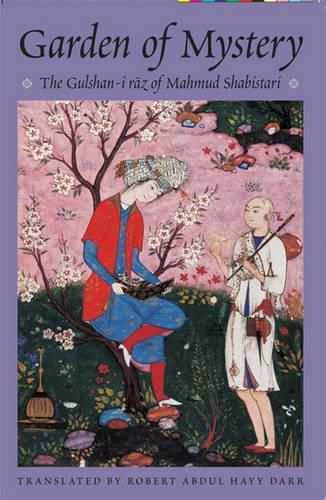Readings Newsletter
Become a Readings Member to make your shopping experience even easier.
Sign in or sign up for free!
You’re not far away from qualifying for FREE standard shipping within Australia
You’ve qualified for FREE standard shipping within Australia
The cart is loading…






In 1317, in Ttabriz, western iran - less than a hundred years after the deaths of Ibn ‘Arabi and Jalaluddin Rumi, whose writings had already made an indelible mark on much of Islamic culture - Mahmud Shabistari (d.1339), a follower of the teachings of Ibn 'Arabi and Attar (Rumi’s literary and spiritual predecessor), composed The Garden of Mystery [Gulshan-i raz] in response to questions put to him by Sayyid Husseini, a fellow mystic from Herat in what is now Afghanistan. The questions themselves introduce controversies and metaphysical enigmas of Sufi thought and practice that were at the heart of spiritual inquiry of that time. Shabistari not only answers the questions to the fullest extent possible, but also provides a coherent literary bridge between the Persian 'school of love’ poetry and the rapidly growing number of metaphysical and gnostic compositions from what had come to be known as the school of the ‘Unity of Being’. The Garden of Mystery holds a unique position in Persian literature. It is a compact and concise exploration of the doctrines of Sufism at the peak of their development that has remained a primary text of Sufism throughout the world from Turkey to India.
$9.00 standard shipping within Australia
FREE standard shipping within Australia for orders over $100.00
Express & International shipping calculated at checkout
In 1317, in Ttabriz, western iran - less than a hundred years after the deaths of Ibn ‘Arabi and Jalaluddin Rumi, whose writings had already made an indelible mark on much of Islamic culture - Mahmud Shabistari (d.1339), a follower of the teachings of Ibn 'Arabi and Attar (Rumi’s literary and spiritual predecessor), composed The Garden of Mystery [Gulshan-i raz] in response to questions put to him by Sayyid Husseini, a fellow mystic from Herat in what is now Afghanistan. The questions themselves introduce controversies and metaphysical enigmas of Sufi thought and practice that were at the heart of spiritual inquiry of that time. Shabistari not only answers the questions to the fullest extent possible, but also provides a coherent literary bridge between the Persian 'school of love’ poetry and the rapidly growing number of metaphysical and gnostic compositions from what had come to be known as the school of the ‘Unity of Being’. The Garden of Mystery holds a unique position in Persian literature. It is a compact and concise exploration of the doctrines of Sufism at the peak of their development that has remained a primary text of Sufism throughout the world from Turkey to India.